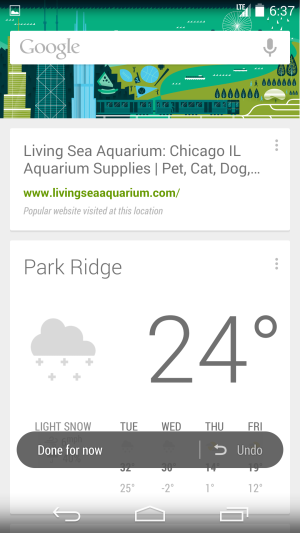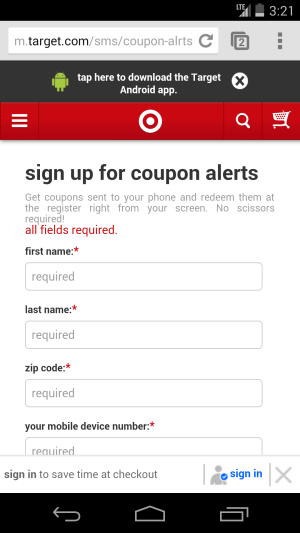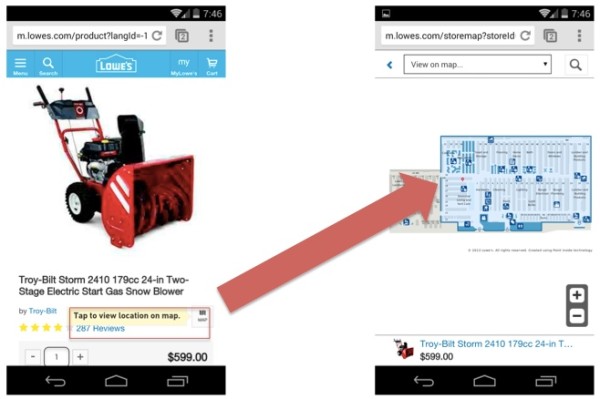Grow In-Store Visits From Smartphones For Better Traffic From Google Mobile
We know 2013 was the year that Google finally started to improve the smartphone search experience, warning webmasters and marketers about things that make a site less usable for smartphone users — like Flash, faulty redirects, slow loading pages and so on. I know sites can be difficult for mobile searchers to use, regardless […]
We know 2013 was the year that Google finally started to improve the smartphone search experience, warning webmasters and marketers about things that make a site less usable for smartphone users — like Flash, faulty redirects, slow loading pages and so on.
I know sites can be difficult for mobile searchers to use, regardless of whether they’re dedicated mobile sites, dynamic serving, or responsive web design — so let’s focus instead on what we can do to improve the mobile searcher experience on our sites.
I’ll be suggesting ways to improve the mobile searcher experience throughout the year in this column, but today I’d like to talk about one particular feature I spotted recently on Google Now, and how optimizing for visits by location might eventually help Google deliver more relevant pages in mobile search.
“Popular Website Visited At This Location”
Spotted this in Google Now on my Android phone several times this past week. When you are at a location where people access a certain site, Google Now shows a card to users at that location with the popular site.

When at the Las Vegas airport, Google Now suggests the departures page on the LAS airport site, as that is a popular page people visit at that location.
So, in addition to PageRank, inbound links, on-page text and other factors Google might measure, they are also now measuring how often people access your pages from a particular location and use that information to deliver those pages in context. There’s no indication that they’re using this signal in search at this time, but there is a precedent for it on desktop.
The Venice update in 2012 brought local pages to the forefront for what Google determined were queries with local intent. There’s nothing to stop Google from taking that to the extreme on mobile devices, using the data on which sites are visited from which locations to make search results even more relevant based on context.
The interesting thing is that, for some locations, they show popular sites even when you’re not at that location. For example, this particular business shown below is about a mile from my house, but Google recommended it while I was sitting in my living room.

Google Now suggested this pet store page because it’s a popular site within a mile of where I was, though I’m not a pet owner and have never visited the site.
I’ve never visited that website from my house (or from anywhere else for that matter), so Google must be taking data about which websites are visited at locations within a certain radius of the device location and using that to suggest websites and pages through Google Now. It can’t be based on queries or visits, because I’ve never been to the store and don’t own any pets.
Spur More In-Store Mobile Usage
In-store mobile device usage is a difficult thing to fake, and I wouldn’t suggest you try. However, you can think about what you might do to encourage in-store device usage to potentially increase visits from your location and have a better chance at appearing in Google Now (and maybe eventually Google Search). Here are a few ideas to start you out:
- Create a compelling offer that’s accessible via QR code. Point the QR code to a popular page on your site that includes a mobile coupon and allow users to scan and redeem in-store. Yes, I know. QR codes are dead and all that. In fact, if you create an offer that’s compelling enough that goes to a mobile user experience, QR codes will be redeemed.
- If you still insist that QR codes are dead, you can always offer a URL or SMS code in-store that takes you to a popular URL. Or better yet, use in-store signage to prompt customers to search a specific keyword in Google that leads to search results where the page you want to promote is the first listing. For example, [target mobile coupons] leads to a page that captures customer information for coupon alerts.

Target’s page offering coupon alerts could be accessed in-store.
The added benefit of sending traffic to this particular page is that it might give Google and other search engines a hint that this is the page that should be ranked for coupon-related queries on mobile devices, not this currently ranked page (below) that requires additional pinching and zooming just to let the searcher know that they probably can’t use the coupons unless they’re connected to a printer.

This is the page that Google currently ranks for coupons on smartphones, even though most smartphone users won’t know what to do with it.
- Follow the lead of Sears and put a price scanner on your mobile site through dynamic serving. Many retail shoppers are going to look for lower prices online in-store anyway (a phenomenon known as “showrooming“), so it makes business sense to try to retain the sale by showing them the lowest price online at your store instead of Amazon or elsewhere.
- Make it possible to locate merchandise within your store with a smartphone. On Lowe’s mobile site, you can currently find the specific location of whatever you’re shopping for anywhere in the store. Given the snowpocalypse currently ravaging Chicago, I was thinking about getting a snow blower — with this innovative feature, I can know exactly where to find it before I ever enter the store. Once I have the map, I can carry it with me on my phone to make it easier to find what I’m looking for and check out. This will spur in-store use of your site from mobile devices, which could be an additional signal to Google that this particular site is relevant in a specific location.

Lowe’s mobile site allows you to see the location of any in-stock item in the store for easy finding and converting.
(By the way, this particular feature is from a company called Point Inside, and they offer it and a number of mobile shopper engagement solutions for retailers and other local businesses.)
Google Now today; tomorrow, Google Search? Perhaps. For now, increasing in-store site traffic could get you more traffic from Google Mobile, on top of driving more in-store mobile conversions to you, not your competitor.
Opinions expressed in this article are those of the guest author and not necessarily MarTech. Staff authors are listed here.
Related stories